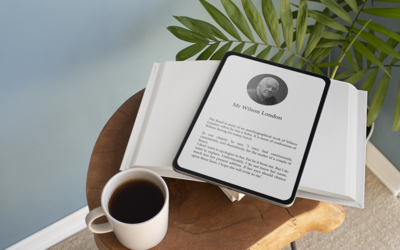Reading books opens up windows to new worlds. As Walt Disney said, “There is more treasure in books than in all the pirate’s loot on Treasure Island.” In this digital era, e-books have become a popular alternative to traditional print books. Ebook conversion services have revolutionized the publishing industry, transforming traditional books, scientific, technical and medical (STM) books, reports, brochures, catalogs, white papers, or any other type of file or document into attractive digital versions that can be read on a computer, tablet, or e-reader device. Even so, ebooks and traditional printed books continue to vie with each other to establish their position as the platform of choice. Several factors go into determining which option readers choose to read from such as cost, portability, durability, reading conditions, and lifetime. Let’s dive into the benefits of printed books and ebook books.
Benefits of Traditional Books
Physical books offer unique value and benefits:
- More tactile in nature: Traditional books are more tactile. These books provide a feel that is entirely different from holding an e-reader. Printed books allow you to feel and smell the aroma of the textured pages and hear the flipping of pages. Well-designed books look and last a really long time. Above all, there is something that comes with turning pages, smelling the paper, and seeing permanent words printed on the pages.
- Help increase memory retention and focus: Several studies suggest that reading on paper rather than an electronic screen helps increase memory retention and focus. Printed books encourage deep reading, and allow the reader to better grasp and retain the meaning of the words. In a Norwegian study, one group of people was given a short story to read on an Amazon Kindle, while another group was given a paperback book. After both groups had completed reading the story, they were quizzed. The outcome was that, those who read the paperback were more likely to remember plot points in the right order.
- Suitable for readers with sleep problems and eye strain: Ebook readers have strong backlights. These high levels of screen luminance from an electronic device can lead to visual fatigue, a condition marked by tired, itching and burning eyes. This exposure to artificial causes a lot of doctors and sleep scientists to recommend regular books over their electronic versions.
- Encourage creativity: When children read a physical book, they can better envision the story. Additionally, children’s books often feature eye-catching pictures that can ignite the young mind. This can inspire them to develop their own stories and characters, fuelling creativity.
- Fosters bonding with caregivers: When a parent reads a book to a child, it builds an emotional connection. Children can discuss the story, share their thoughts and opinions, and ask questions, which promotes language development and key thinking skills. Importantly, the child will remember the experience for the rest of their life.
Advantages of eBooks
- More functional and easier to carry around: Ebook readers are portable and lightweight. Instead of carrying multiple bulky physical books, you can carry around thousands of book in one eBook reader.
- Benefit individuals with poor eyesight or reading disorders: E-books are beneficial especially for individuals with poor eyesight or reading disorders like dyslexia, as almost all e-readers or tablets provide a range of options for changing the text size and spacing of lines, thereby making eBooks easier to read. A study was conducted in Landmark High School in Prides Crossing, MA (USA), incorporating 103 high school students with lifelong histories of reading struggle (dyslexia). The study team observed reading comprehension and speed of these 103 students and found that students were able to read more effectively and with greater ease with the e-reader than reading on paper.
- Ubiquitously accessible: You can download ebooks, store them for later use, and read them anywhere. Students can go read them even while travelling. Some eReaders offer offline accessibility, allowing you to read them even in the absence of an internet connection.
- Shareable: An ebook can be shared with many people at the same time. This ability promotes collaboration.
- Searchable: Ebooks allow you to easily search for any information, without having to turn page after page. These books have the ability to search through the whole book or possibly your entire library in seconds. It is possible to scroll the text with one finger, helping older readers to navigate through the texts with ease. E-books are also shareable. You can quickly email an e-book to yourself or a friend.
- Can be synced with audiobooks: It is possible to sync e-books with audiobooks. This in turn allows you to enjoy your favorite volumes and stories in the car or while you are walking.
- Ease of publication: It may be free to publish information in digital formats, thereby avoiding the need to find an agent to secure a book deal with a publisher. Self-publishing a traditional book is not particularly cheap.
- Augmented Reality (AR): augmented reality books and publications merge the virtual world with reality, giving readers a unique experience. AR has the capability to incorporate interactive elements, such as games or videos, into educational content and children’s books. By offering features like virtual tours and 3D projections, AR enhances the value of printed material. This technology introduces an additional dimension of information, including audio commentary and video footage, thereby enabling the creation of interactive applications and games that seamlessly integrate with the physical environment.
Here’s a table that compares the features of printed books and ebooks.
| Feature | Printed Books | Ebooks |
|---|---|---|
| Portability | Heavier, bulkier | Light and portable |
| Accessibility | Limited availability | Instantly downloadable |
| Reading Experience | Physical pages, tactile | Digital screen, adjustable |
| Storage | Takes up physical space | Stored digitally |
| Durability | Can be damaged or lost | No physical wear, backups |
| Highlighting/Notes | Manual annotation | Digital highlighting, notes |
| Searchability | Limited | Easy and quick |
| Shareability | Physical sharing | Digital sharing and syncing |
| Cost | Varies, can be expensive | Often cheaper, occasional discounts |
| Environmental impact | Paper production impact | Generally considered greener |
| Availability | May be out of stock | Always available |
In this digital age, there is no going back. Ebooks have come a long way and not only allow for expanded reach but also better accessibility of content. Technavio estimates that the global e-book market size will grow by USD 8316.2 million from 2022 to 2027.
The transformation of physical documents or printed materials into digital formats through document scanning services lays the foundation for subsequent ebook conversion. If you are considering converting your book to digital format, make sure you reach out to an expert.




